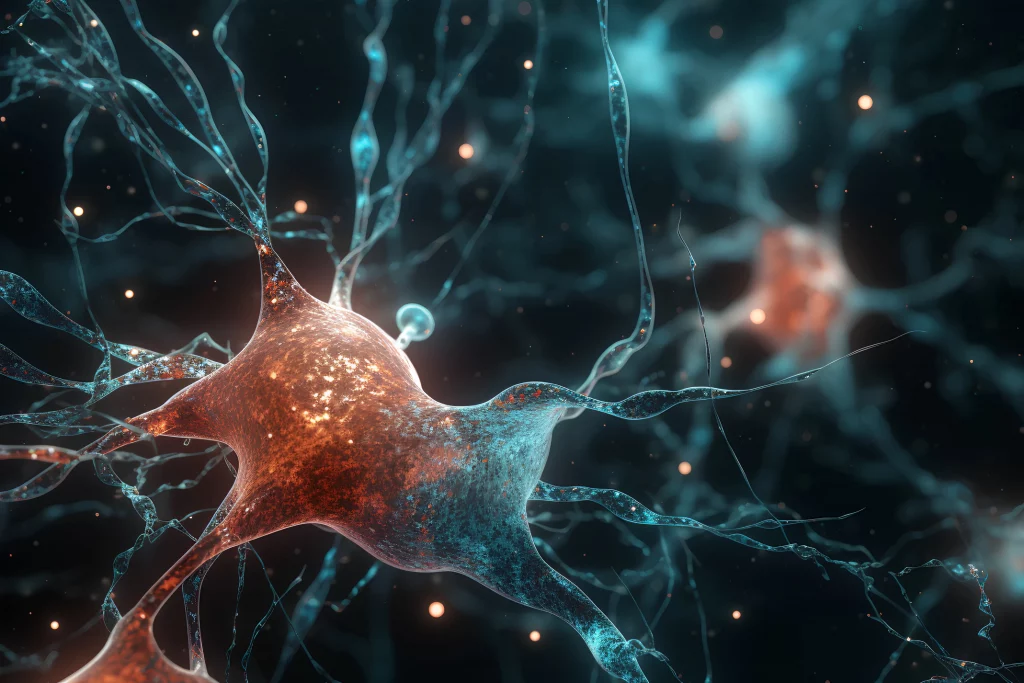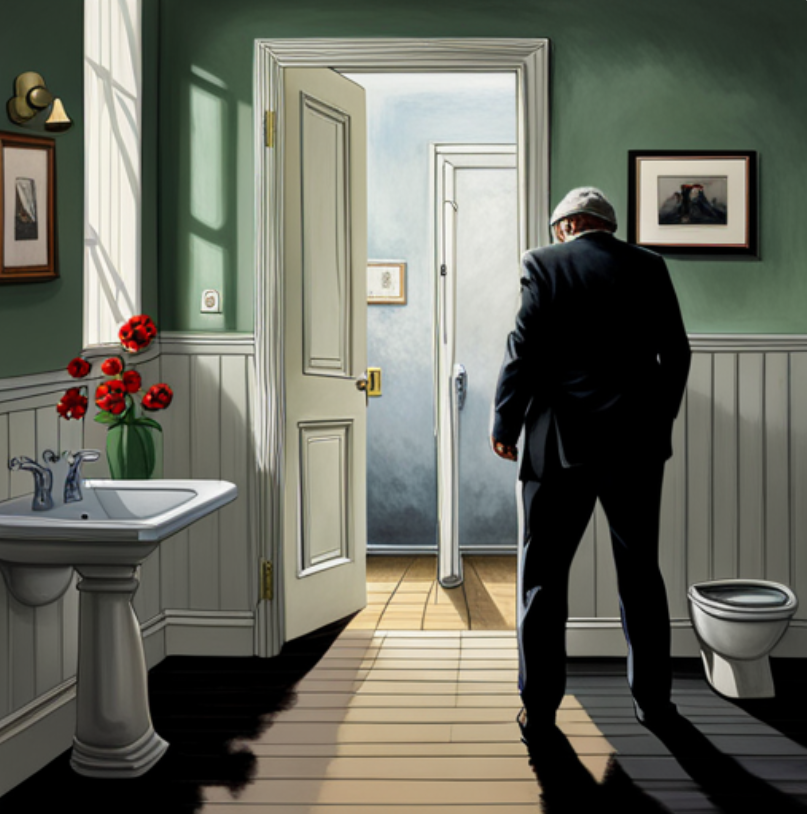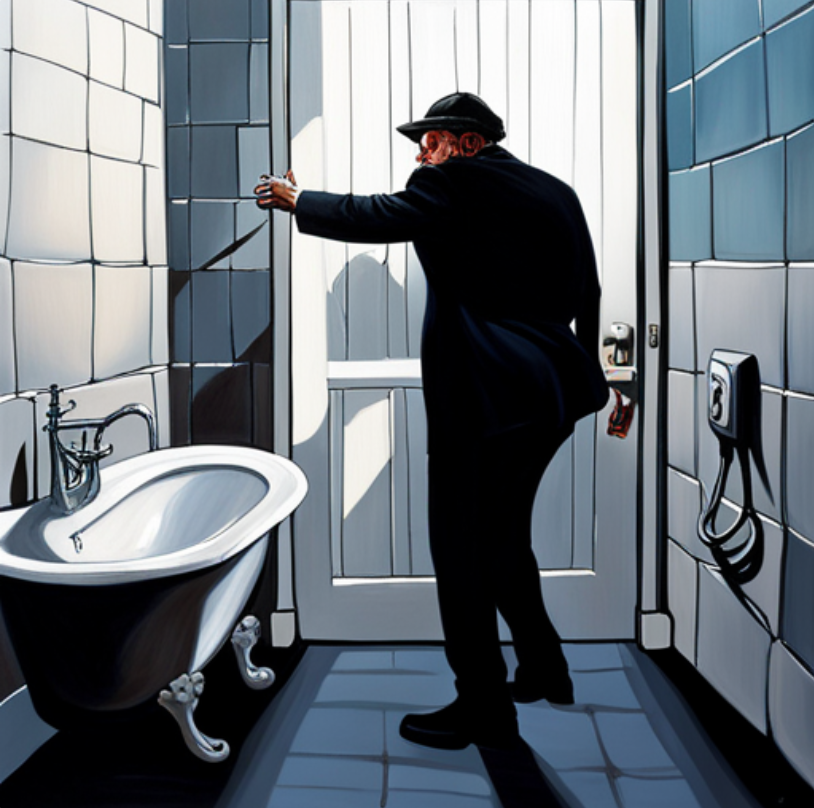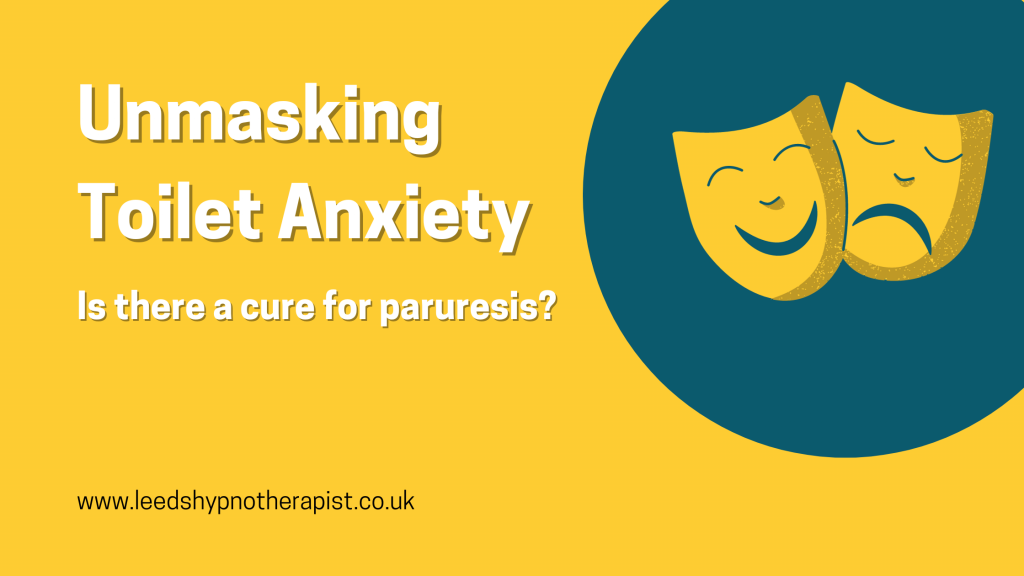Toilet anxiety, or paruresis, is a hidden struggle that many deal with in silence. It’s a form of social anxiety that can significantly affect individuals’ daily activities, quality of life, and even their mental health. This blog post aims to bring this often unspoken issue to the forefront, exploring its many facets, from its psychological roots often linked to fear of public spaces or past traumatic experiences, to its physiological aspects. We will delve into the role of the autonomic nervous system, which triggers the fight or flight response, further exacerbating the symptoms of this condition. Moreover, we will explore the promising potential of treatment options such as hypnotherapy in managing and overcoming toilet anxiety.
Understanding the Causes of Toilet Anxiety
To understand toilet anxiety, it’s crucial to acknowledge its primary causes. For many, the fear stems from an aversion to public spaces, more commonly known as agoraphobia. This fear can be exacerbated in public toilets, where one feels scrutinised or exposed. In other cases, a traumatic past event related to bathrooms or public facilities can trigger the onset of paruresis.
From the physiological side, the autonomic nervous system plays a significant role. In situations perceived as stressful or threatening, the system initiates a ‘fight or flight’ response. When this response is triggered in the context of using the toilet, it can inhibit the natural process, leading to what is known as toilet anxiety.
The Impact of Paruresis
The impact of paruresis on those who suffer from it can be deeply debilitating. It can limit their ability to travel, engage in social activities, or even maintain a consistent work routine. The constant fear and anxiety can lead to avoidance behaviours, which in turn can result in feelings of isolation and affect overall mental well-being. Furthermore, severe cases of toilet anxiety may even lead to physical health issues due to the forced retention of urine or bowel movements. Overcoming paruresis can be a daunting journey, but with appropriate support and treatment options such as hypnotherapy, it’s entirely possible to regain control and lead a life free from this fear.
The Role of the Autonomic Nervous System in Toilet Phobia
In the forthcoming sections, we will delve deeper into the intricacies of the autonomic nervous system and its role in toilet phobia. The “Fight or Flight Response in Relation to Paruresis” will explore how our body’s inherent reaction to perceived threats can inadvertently create challenges when trying to use the toilet. Following that, the “Intersection of Psychological and Physiological Factors” will examine how mental and physical aspects intricately intertwine in this condition, shedding light on why treating paruresis requires a multi-faceted approach. Lastly, “Hypnotherapy: A Possible Solution” will introduce you to the concept of hypnotherapy as a potential treatment avenue, detailing how it can help individuals overcome their toilet anxiety.

The Autonomic Nervous System
The autonomic nervous system (ANS) is a pivotal player in coordinating the body’s response to stress, including the stress associated with toilet phobia. It operates involuntarily, controlling functions such as heart rate, digestion, and urination. In moments of panic or anxiety, the ANS triggers the ‘fight or flight’ response. This response can cause physical symptoms such as rapid heart rate, sweating, and in the case of toilet phobia, an inability to urinate or defecate.
The Autonomic Nervous System and Toilet Phobia
The autonomic nervous system (ANS) can play a significant role in heightening toilet phobia. When an individual with paruresis attempts to use the toilet, especially in a public setting, the ANS perceives it as a stressful situation, triggering the ‘fight or flight’ response. This response causes physical reactions such as a rapid heartbeat, increased perspiration, and heightened senses, which can further intensify feelings of anxiety and make it even more challenging to urinate or defecate. This heightened state of anxiety can create a vicious cycle – the more stress the individual feels, the stronger the ‘fight or flight’ response, which then exacerbates the toilet phobia. Breaking this cycle often requires professional help, including potential treatment options like engaging with a trained therapist or exploring methods such as hypnotherapy.
The Role of the Amygdala
The amygdala, a small almond-shaped structure in the brain, also plays a critical role in the manifestation of toilet phobia. It’s primarily involved in the processing of emotions, especially fear. When an individual with toilet phobia attempts to use a public restroom, the amygdala perceives this as a threat and triggers the ‘fight or flight’ response through the ANS.
Amplification of Phobia by the Amygdala
The amygdala can significantly amplify the intensity of toilet phobia. As the brain’s primary centre for processing fear-related stimuli, it has a disproportionate influence over our response to perceived threats. For those with paruresis, using a public lavatory may be perceived as such a threat. The amygdala, in response, triggers a heightened state of alertness, exacerbating anxiety levels. Consequently, this results in an overactive ‘fight or flight’ response that makes the act of urinating or defecating in public spaces feel increasingly difficult, thereby reinforcing the fear and perpetuating the cycle of anxiety. This perpetuation of fear, in turn, makes the individual more prone to avoiding public toilets, further solidifying the phobia. Deconstructing these fear responses with the help of a trained therapist or through techniques such as hypnotherapy can aid in alleviating the symptoms of toilet phobia.
The Vagus Nerve and Its Function
Last but not least, the vagus nerve, the longest of the cranial nerves, has a significant role in managing the body’s response to stress and fear. It communicates with the ANS and helps to control the ‘rest and digest’ or ‘feed and breed’ responses, counteracting the ‘fight or flight’ response. So, in toilet phobia, it’s the imbalance between the ‘fight or flight’ and ‘rest and digest’ responses, with the former dominating, that can inhibit normal bodily functions like urination and defecation. This understanding allows therapists to explore potential treatments, including techniques to stimulate the vagus nerve to help restore balance and alleviate the symptoms of toilet phobia.
Vagus Nerve Exercises for Alleviating Symptoms
One potential method for re-establishing balance between the ‘fight or flight’ and ‘rest and digest’ systems involves performing exercises specifically designed to stimulate the vagus nerve. These exercises are surprisingly simple, yet can have a profound impact on the individual’s ability to manage their anxiety.
Deep and slow breathing, for example, is an effective way to activate the vagus nerve. This form of conscious breathing encourages the body to shift towards a state of relaxation, thus reducing the dominance of the ‘fight or flight’ response. Singing and humming have also been shown to increase vagal tone, as these activities cause a physical vibration of the vagus nerve, leading to its stimulation.
In addition, practising yoga or tai chi offers multiple benefits. These activities combine physical postures, breathing exercises, and meditation, all of which can stimulate the vagus nerve and promote relaxation.
With the guidance of a trained therapist, these exercises can be integrated into a comprehensive treatment plan for individuals with toilet phobia, offering a non-pharmacological approach to managing their symptoms and enhancing their quality of life.

Paruresis: More Than Just a Fear of Public Spaces
Paruresis, often oversimplified as a mere fear of public spaces, is a complex anxiety disorder with deep-seated psychological and physiological roots. It’s not simply about being unable to go to the toilet in public areas. At its core, paruresis is a manifestation of intense worry and anxiety that can occur even in perceived ‘safe’ environments, such as one’s home if guests are present.
The condition is often linked to past traumatic events or negative experiences associated with toilet use, which can trigger a potent ‘fight or flight’ response. This can result in an inability to urinate, even when the need is urgent. The autonomic nervous system, responsible for this response, can become hypersensitive to the anxiety associated with toilet use, creating a vicious cycle of fear and avoidance.
As such, treating paruresis requires a comprehensive approach that addresses both the psychological and physiological aspects of the condition. Therapies such as hypnotherapy, cognitive-behavioural therapy, and vagus nerve exercises can play significant roles in breaking this cycle of worry and fear. In doing so, individuals with paruresis can regain control over their bodily functions, reducing their anxiety and enhancing their overall quality of life.
The Impact of Past Traumatic Experiences on Toilet Anxiety
Past traumatic experiences, especially those related to toilet use, can have a profound impact on an individual’s bladder and bowel functions. Incidents such as soiling themselves, being ridiculed or embarrassed around toilets, or being unable to access a toilet in a time of need can scar a person’s psyche. These experiences can lead to heightened anxiety and fear whenever the need to use the toilet arises. This fear is not just about the act of using the toilet itself, but also about the potential of reliving those distressing events. The psychological impact can be so severe that it triggers a physiological response, causing the individual to involuntarily restrict the flow of urine or withhold bowel movements. This reaction, while rooted in the mind’s attempt to protect the individual from perceived harm, unfortunately, perpetuates the fear and anxiety associated with toilet use, thereby exacerbating the symptoms of paruresis.
Exploring Hypnotherapy as a Treatment for Paruresis
Hypnotherapy emerges as an effective toilet anxiety cure, as it addresses the root cause of anxieties, fears, and phobias. It operates on the principle that our subconscious mind holds the key to our anxieties and fears. Using techniques such as relaxation, visualisation, and positive suggestion, hypnotherapy taps into this subconscious level, helping individuals to confront and alter their fear-based reactions to using the toilet.
The Effectiveness of Hypnotherapy in Treating Paruresis
Hypnosis allows the individual to enter a relaxed state of focused concentration where they are more open to suggestions. This state enables the hypnotherapist to help the individual reframe their fear and anxiety, replacing negative thoughts and memories with positive ones.
During hypnotherapy sessions, individuals are guided into a relaxed state where they can safely confront their anxieties and fears related to toilet use. They are then presented with positive affirmations and visualisations, aimed at diffusing the fear associated with past traumatic experiences. Over time, these positive associations replace the fear and anxiety, leading to a decreased physiological response and easing the symptoms of paruresis.
Why Hypnotherapy Excels Over Cognitive Behavioural Therapy
While cognitive-behavioural therapy (CBT) also aims to modify negative thoughts and behaviours, it often requires a longer treatment period and can struggle to reach the deep-seated fears that paruresis can stem from. On the other hand, hypnotherapy can bypass the conscious mind’s barriers, addressing the root causes of the anxiety more effectively and swiftly. Moreover, hypnotherapy can provide tools for relaxation and stress management, which individuals can use independently whenever they feel the onset of toilet anxiety, making it a more sustainable and empowering approach.
As a non-invasive and natural therapy, hypnotherapy provides a safe and effective treatment option for individuals struggling with paruresis. However, it’s important to remember that like any therapy, success varies from person to person and often depends on their willingness to engage in the process and confront their fears.

How Hypnotherapy Can Help Overcome the Fear of Public Toilets
Hypnotherapy has garnered substantial recognition as a fast-acting treatment for various fears and phobias, including paruresis. Unlike traditional methods that might take weeks, months, or even years to show tangible results, the effects of hypnotherapy can often be noticed in just a few sessions. This promptness is courtesy of hypnotherapy’s unique approach that targets the subconscious mind directly, the realm where our most deep-seated fears and anxieties reside.
Swift Relief from Stress and Anxiety
Hypnotherapy aids in lowering stress and anxiety symptoms by promoting a sense of tranquillity and control. As you enter a relaxed state during a hypnotherapy session, your body’s stress responses are muted. This experience can help you learn to better manage your own anxiety symptoms when they arise, equipping you with the skills to calm your mind and body. The hypnotherapist can then introduce positive affirmations and coping strategies into your subconscious, which can further help in reducing stress and anxiety.
Building Confidence with Hypnotherapy
In addition to combating stress and anxiety, hypnotherapy can be instrumental in fostering self-confidence. By eradicating the fear at its root, it allows you to build confidence in situations that previously induced anxiety, such as using public toilets. The newfound confidence can extend beyond the specific phobia or fear, impacting other areas of your life as well. With continuous practice and reinforcement of positive affirmations, hypnotherapy can help transform not only your response to specific fears but also your overall self-esteem and confidence.
How Hypnotherapy Can Help Stop Toilet Anxiety
Hypnotherapy for toilet anxiety, in many cases, can provide instant relief. One session can be enough to instigate significant positive change. In that session, your hypnotherapist will guide you into a deeply relaxed state, quietening the mind and reducing the power of the fight or flight response that fuels anxiety. They’ll then instil positive affirmations and strategies into your subconscious, equipping you to manage your anxiety and lessen your fear of being too far from a toilet. The results can be profound – imagine walking out of your first session with a renewed sense of freedom and control, no longer bound by the constraints of toilet anxiety.
So why wait? The relief you seek could be just one session away. Contact The Leeds Hypnotherapist today to book your free initial consultation. Break free from your fears and live life on your own terms. Start your journey towards a life free from toilet anxiety.




